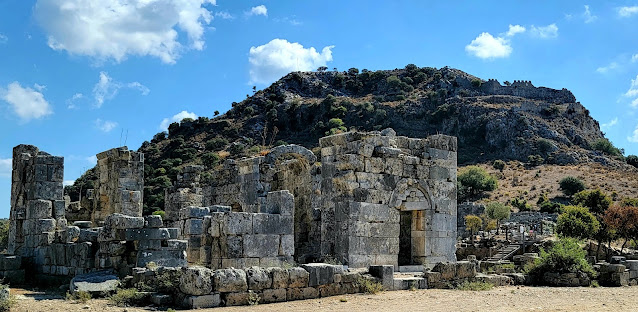Reasons to Visit Ancient City Kaunos in Turkey
The ancient city of Kaunos takes tourists back in
time with its rock tombs, basilica, agora, theatre seating for 5,000, and the
Holy Temple of Demeter. So why are you waiting to apply now for a turkey visa online?
History of Kaunos
The British Rd Hoskyn made the initial discovery of
Kaunos. The inscribed block that read "People and Assembly of Kaunos"
that Hoskyn discovered during his visit in 1840 led him to believe that this
area was the city of Kaunos. The rock tombs stand up right now and are the most
significant aspect of the old town. Strabo, a geographer, said that Kaunos had
shipyards and a port that could be closed under the Acropolis.
Throughout history, the ancient city of Kaunos was
ruled by Persia, Egypt, Rhodes, the Pergamon kingdom, and the Roman empire.
Kaunos, a port town significant for trade, gradually lost its port role when
the sea was filled with alluvium. The Caunos people were natives of Caria,
according to Herodotus, the father of history, albeit they were considered
Cretans.
The north side of the mountains depicts the Middle
Ages. The longwall spans from the harbour's northern end to the cliff beyond
Dalyan Village. The wall's north portion was constructed during the Mausolos
era. They date from the Hellenistic Era and are located to the northwest. Those
from the Archaic Period face the harbour. At the bottom of the Acropolis is the
theatre. Seats are arranged in 33 rows. A basilica-style church is housed in
one of the structures still west of the theatre. Others are from the Roman
Temple and Baths. A podium is raised by three steps behind the structure,
constructed in the shape of an incomplete circle and has smooth columns. The
temple's remnants are seen here. What the circular building was needs to be
clarified.
Green-faced People from Kaunos
According to documented facts, malaria risk remained
in Dalyan and its surroundings until the late 1940s. Malaria has been
eliminated due to the mosquito control measures put in place in recent years.
This indicates that malaria has affected Kaunos throughout its history. The
Caunos people must be so "green-faced" that they label themselves
"ill" because of this malaria, even though they do not acknowledge
it. An unnamed account credited to Stratonikos, one of the most outstanding
string instruments of the Hellenistic Era, tells us of this pain and
humiliation. The life cycle of locals was also equal to that of leaves,
reasoned Stratonikos upon seeing people with "green skin" wandering
the streets of Kaunos. "Should I have been so stubborn by calling this
city ill when there were dead walking about," he said when the city's
citizens complained that they were being made fun of. Strabon XIV, 651.3
Dalyan King Tombs
The rock tombs on the giant cliff next to the old
city of Kaunos are one of the buildings you should see while visiting Kaunos.
Previously, the high rock tombs built for persons of high status were created
that way because of their closeness to God. One of Dalyan's most fascinating
sights is the graves cut into the rocks. Although the method used to cut the fragile
stones is unknown, the result is one of Dalyan's landmarks. People could walk
around the tombs, which were supposed to be separate from the mountain. The
grave on the right of the rock tombs, which you pass by during the Dalyan boat
trips, is said to have been left following the Persian or Alexander the Great
invasion.
If you want a break, apply for a Turkish
visa online and visit Kaunos Ancient City once in a lifetime.






Comments
Post a Comment